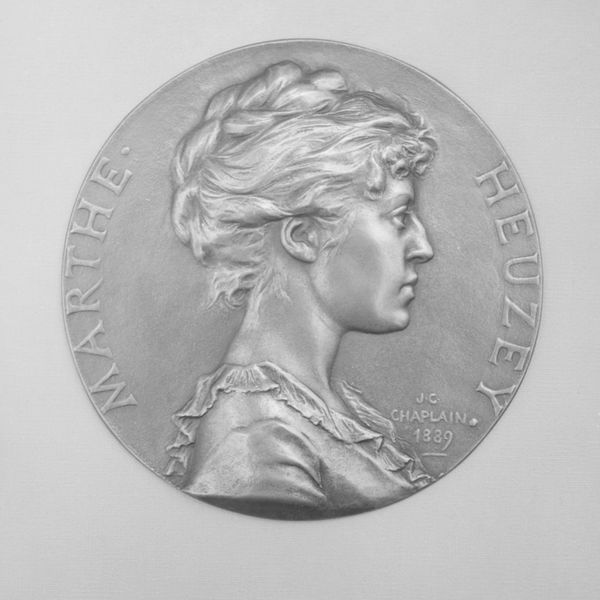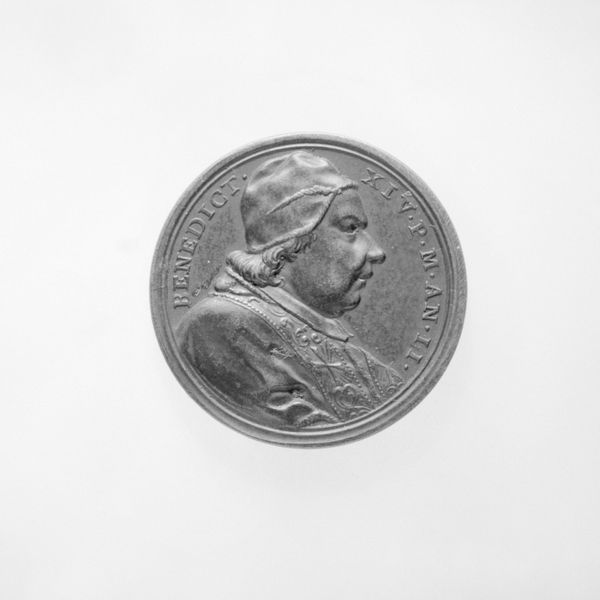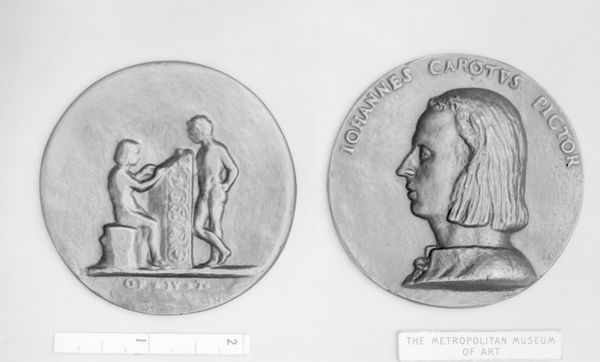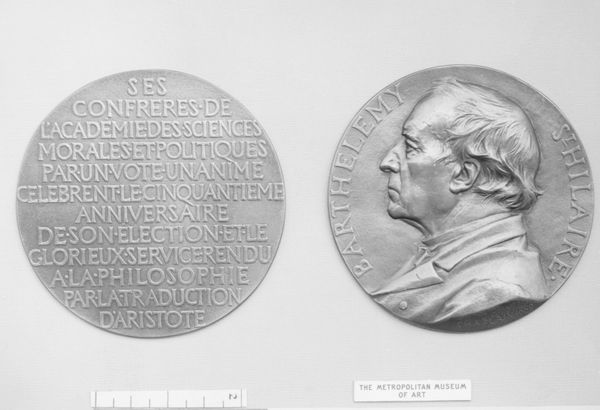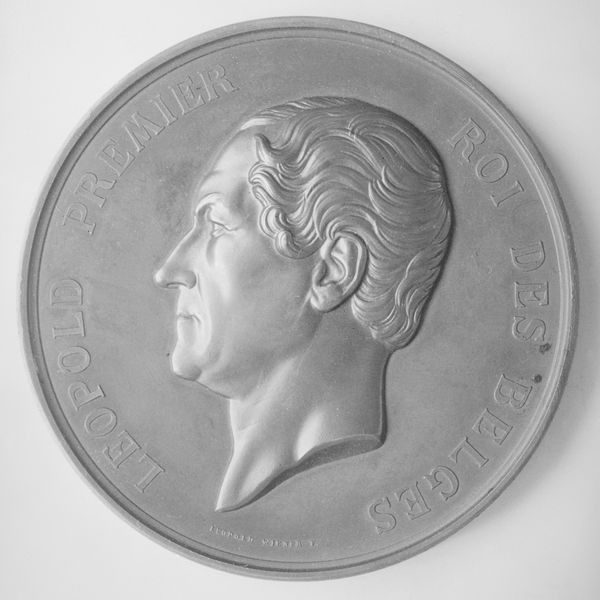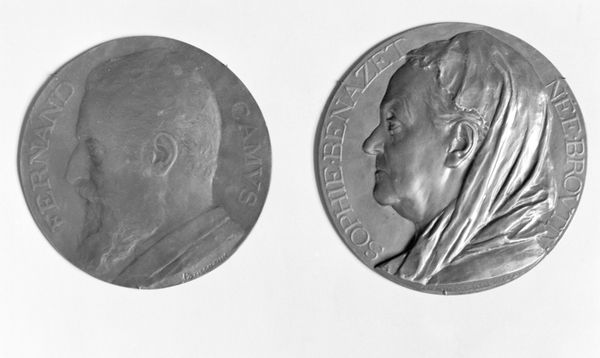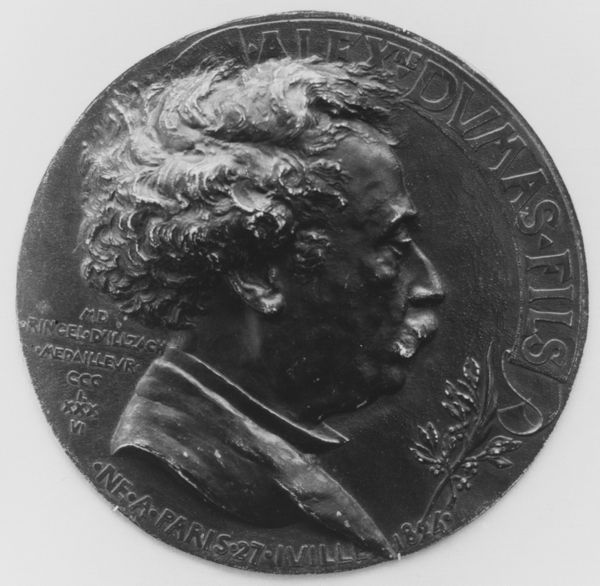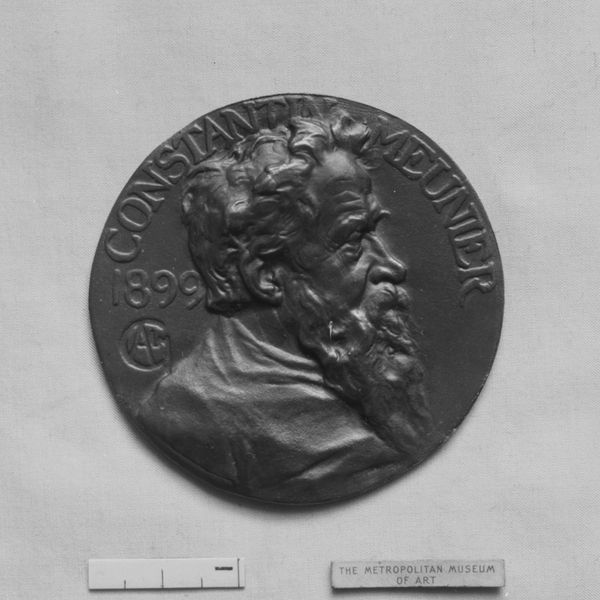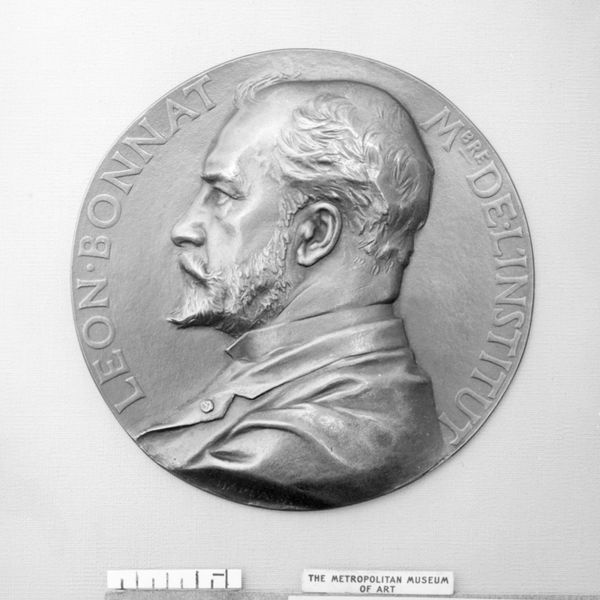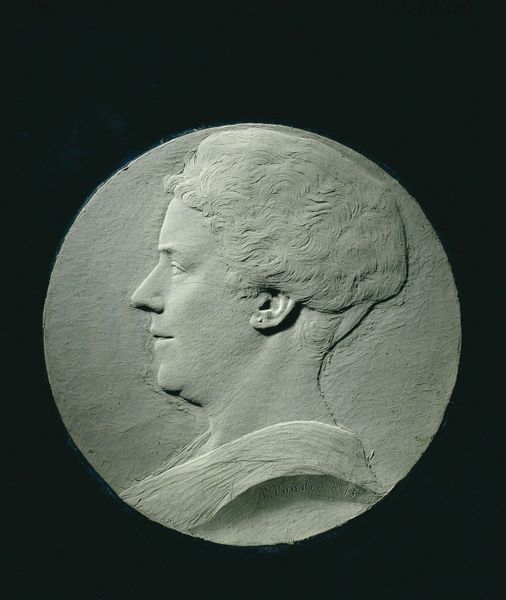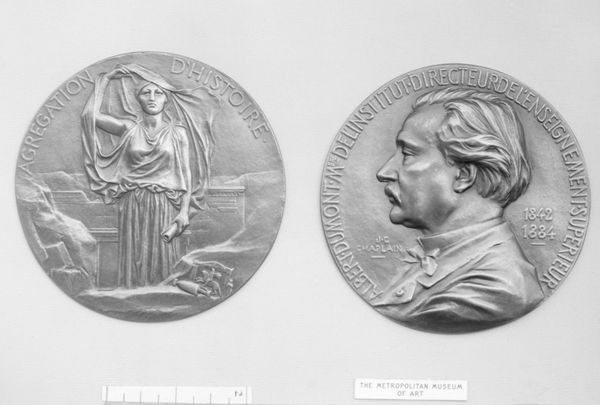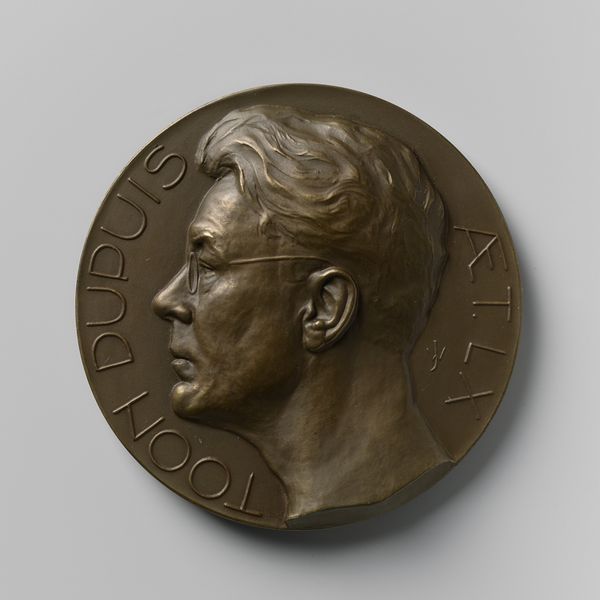
Portrait of Baudry, the Painter (1828–1886) 19th century
0:00
0:00
relief, bronze, sculpture
#
portrait
#
medal
#
neoclacissism
#
sculpture
#
relief
#
bronze
#
sculpture
#
decorative-art
Dimensions: Diameter: 3 3/4 in. (9.5 cm)
Copyright: Public Domain
Editor: This is Jules-Clément Chaplain's bronze relief, "Portrait of Baudry, the Painter," from the 19th century, residing here at the Met. It has a neoclassical feel to it and is relatively small, about the size of a plate, perhaps. What strikes you when you look at the portrait’s form? Curator: Formally, the relief presents a fascinating study in contrasts and contained energy. Observe how the circular boundary both confines and amplifies the bust’s presence. The use of bronze also allows the light to emphasize the intricate detailing of Baudry's features—notice the furrow of his brow, the precise curl of his mustache, the delicate texture of his hair. Editor: The texture seems to bring the sculpture to life. It contrasts strongly with the even plane behind Baudry. Do you think that adds to the focus on the man? Curator: Precisely. The smooth, polished background acts as a foil to the highly textured portrait, directing our gaze and emphasizing Baudry’s intellectual vitality. Consider the spatial arrangement; the inscription of the sitter's name and profession—"Paul Baudry Peintre"—are placed strategically along the periphery, acting as both frame and identifier, neatly balanced in form on opposite sides. Do you see how the carefully chosen placement contributes to the piece's overall harmony? Editor: Yes, they act almost as an extension of his body and seem integrated within the artwork as a whole, rather than a descriptive element added later. The careful integration certainly makes me wonder if the composition serves a dual function, aesthetic and informational, and it shows how artists were so versatile in their craft at that time. Curator: It is this balance between representation and abstraction that elevates the piece beyond mere portraiture and makes it such a compelling object for analysis. The way Chaplain uses the bronze as a material and the framing circle gives order and allows an otherwise typical portrait to feel complete.
Comments
No comments
Be the first to comment and join the conversation on the ultimate creative platform.
